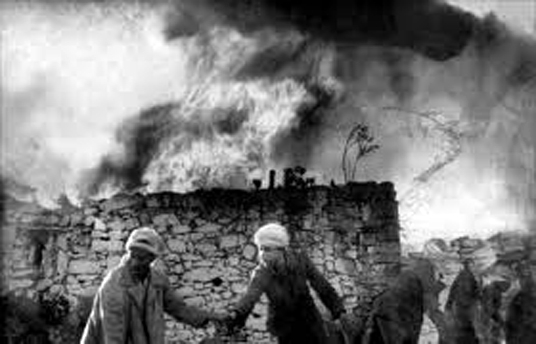Algerian Cinema: Caught between past and present - Part I
Nov 09, 2012
The shadow of the past
By DFI Programming Team
In the middle of the Algerian liberation war an elderly peasant woman finds herself all alone in her humble house in the mountains. Her husband was killed in a raid, her only son captured by French soldiers. One day she decides to set on a tiring journey through the deserted rough countryside, moving from one detention camp to the other in a desperate search for her prodigal son.
Shot in black and white ‘ Wind from the Aurès ’ (1966) by Mohammed Lakhdar-Hamina displays a sober, if not rigid realism. His camera remains always close to his main character, brilliantly performed by actress Keltoum, one of the few Algerian women able to start an acting career before national liberation. The observatory tone of Hamina’s mise-en-scene adds up to one of the most direct, yet at the same time, unobtrusive descriptions of the daily ordeals under French occupation.

The Winds of the Aures (Le Vent des Aurès)
The Algerian war of liberation ended in 1962 with around one million dead and around two million displaced people. This year marks 50 years of Algerian independence and 47 years of Algerian cinema. However until now, the country’s film production has been caught in the birth channel, even though it has shown – starting with its first production ‘Dawn of the Damned’ (1965) by Ahmed Rachedi – very strong moments and produced some extraordinary works. It has been dominated by the notion of struggle, be it on the level of its content or on the level of its very infrastructural basis.
Of course, it was a matter of national pride that Algeria’s cinema could claim due to the involvement of its first representatives, Ahmed Rachedi and Mohamed Lakhdar Hamina, in the liberation movement to be born in the maquis (bush/jungle) between the ranks of freedom fighters who later became the backbone of the new emerging Algerian state.
Later, Algerian cinema developed into one of the most outspoken defendants of leftist anti-colonial Third Cinema aiming to reflect a dignified image of its own people as opposed to the alienated products of the dream factories of the First World. It made huge efforts to create a national cinematic infrastructure with film labs and the first Arab cinémathèque, backing moreover important productions of nascent Black-African cinema, such as Ousmane Sembène’s ‘Camp de Thiaroye’ (1988) or, producing one of the most important anti-colonial film spectacles in history, namely the ‘ The Battle of Algiers ’ (1966) by Italian director Guilio Pontecorvo in which former FLN freedom fighters made their appearances. Its biggest achievement in this respect was that Mohammed Lakhdar-Hamina’s opulent anti-colonial epic ‘Chronicle of the Years of Ember’ (1975) brought home the 1975 Cannes Film Festival Palme d’Or.
Despite these achievements, over time Algerian cinema subordinated since 1964 to rigid state control, degenerated into a self- laudatory propaganda machine alienating particularly representatives of the post-war generation, successfully suffocating dissident or innovative approaches in the decades to come.
Related Posts:
Algerian Cinema: Caught between past and present – Part II
Algerian Cinema: Caught between past and present – Part III